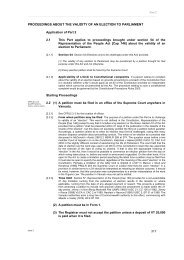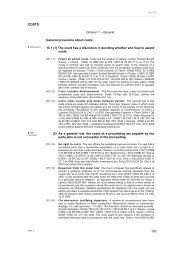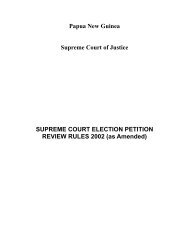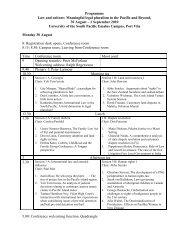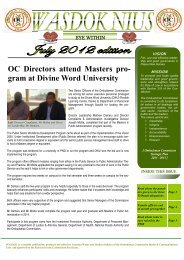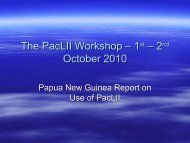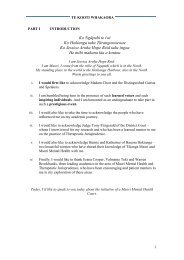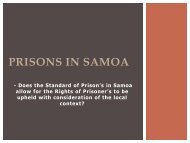Training Completion Report - PacLII
Training Completion Report - PacLII
Training Completion Report - PacLII
Create successful ePaper yourself
Turn your PDF publications into a flip-book with our unique Google optimized e-Paper software.
PACIFIC JUDICIAL DEVELOPMENT PROGRAMME<br />
Advanced ToT Workshop <strong>Completion</strong> <strong>Report</strong><br />
<br />
<br />
<br />
<br />
<br />
<br />
<br />
7% of participants had no understanding of the purpose of conducting a<br />
training needs analysis. 70% of participants felt they had a good understanding<br />
and 23% felt they had a strong understanding.<br />
23% of participants had no understanding of the process for identifying,<br />
analysing, selecting and sequencing the content of a learning program. 62% of<br />
participants felt they had a good understanding and 15% of participants felt<br />
they had a strong understanding.<br />
15% of participants felt they had no understanding of reviewing and evaluation<br />
learning programs. 77% of participants felt they had a good understanding<br />
while 8% felt they had a strong understanding.<br />
8% of participants felt they had no understanding of the knowledge or skills<br />
required to deliver a training session to a group of learners. 54% of participants<br />
felt they had a good understanding and 38% of participants felt they had a<br />
strong understanding.<br />
8% of participants felt they had no understanding of a range of teaching<br />
methodologies they could use in a training session. 62% had a good<br />
understanding and 30% had a strong understanding.<br />
30% of participants had no understanding of the four principles of assessment<br />
while 70% felt they had a good understanding.<br />
23% of participants felt they had no understanding of how to develop<br />
assessment tools to assess learning. 70% of participants felt they had a good<br />
understanding while 7% felt they had a strong understanding.<br />
3.1.3 SUMMARY OF PRE-WORKSHOP RESPONSES REGARDING CONTENT KNOWLEDGE<br />
<br />
<br />
<br />
<br />
<br />
<br />
77% of participants were able to explain the purpose of conducting a TNA<br />
(<strong>Training</strong> Needs Analysis).<br />
53% of participants were able to define an action plan and explain its purpose.<br />
77% of participants were able to explain the importance of establishing learning<br />
outcomes at the beginning of training.<br />
92% of participants were able to list three different teaching methodologies.<br />
46% of participants were able to identify two characteristics of adult learners.<br />
85% of participants were able to identify three matters that should be included<br />
in a session plan and explain the purpose assessment of training.<br />
3.2 POST-WORKSHOP ASSESSMENT<br />
At the conclusion of the Workshop participants completed a Post-Workshop Questionnaire<br />
that was divided into two parts. Questions in the first part dealt with the quality and value<br />
of the Workshop and questions in the second part asked students to rate their level of<br />
knowledge and skills after completing the Workshop. Annexure Three contains a list of<br />
the questions and Annexure Four contains a detailed list of the text based responses<br />
from participants.<br />
3.2.1 SUMMARY OF RESPONSES REGARDING QUALITY AND VALUE OF THE WORKSHOPS<br />
One participant did not complete the questions regarding the quality and value of<br />
the workshop. The following statistics represent those participants who responded<br />
to these questions.<br />
8% of participants felt quite confident as a trainer after the Workshop. 42% felt<br />
confident as a trainer and 50% of participants felt very confident.<br />
PJDP is implemented by the Federal Court of Australia with funding support from NZ MFAT 3




